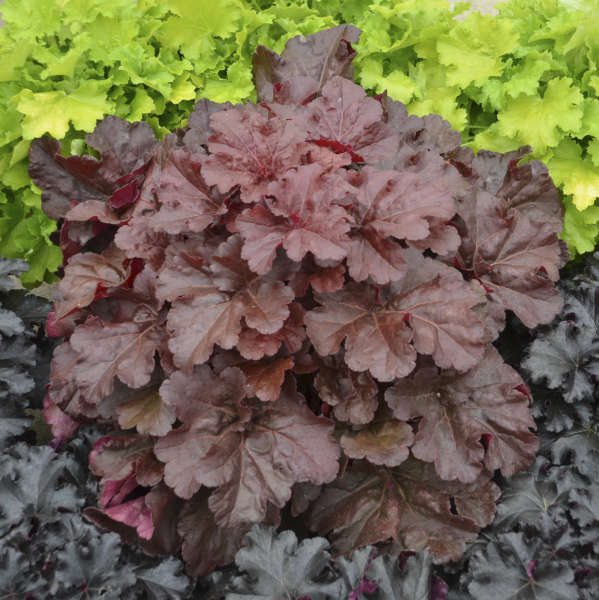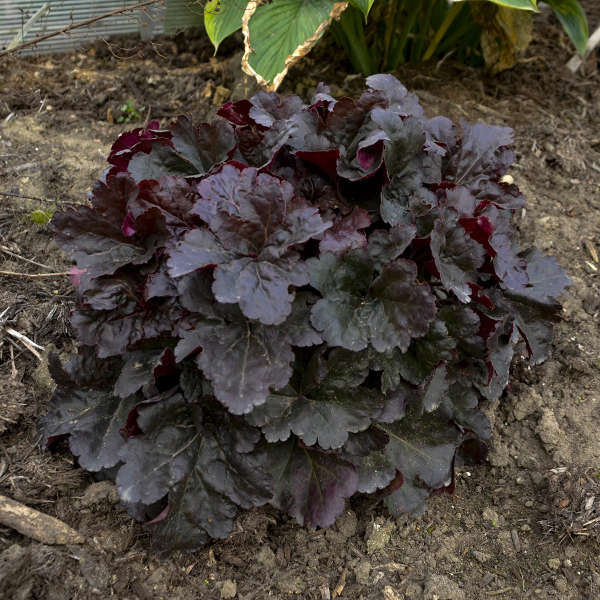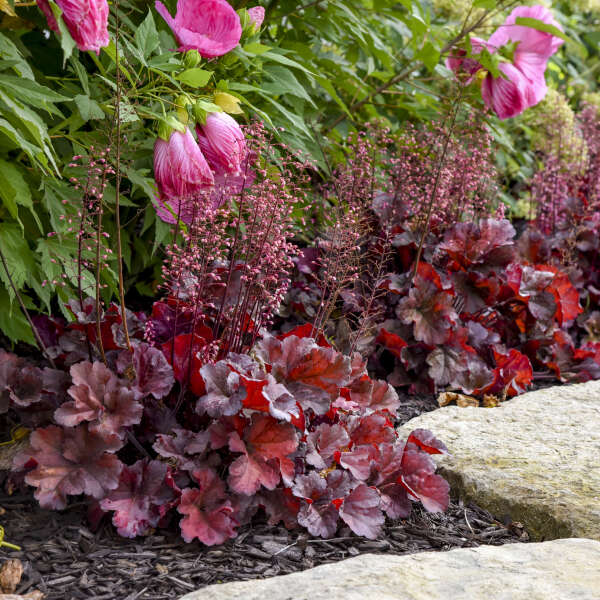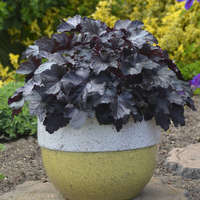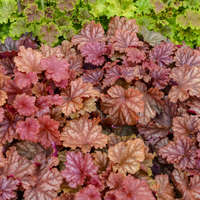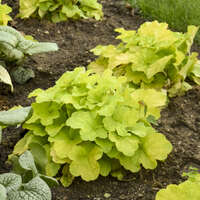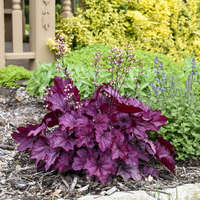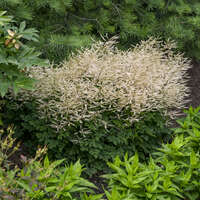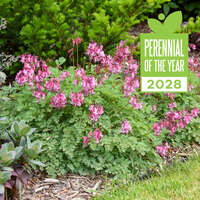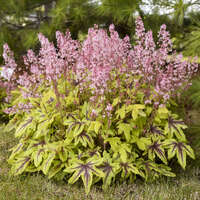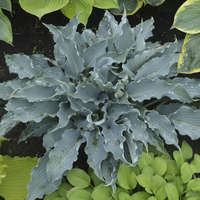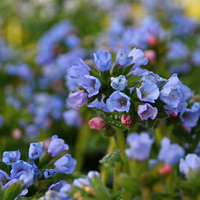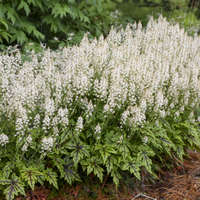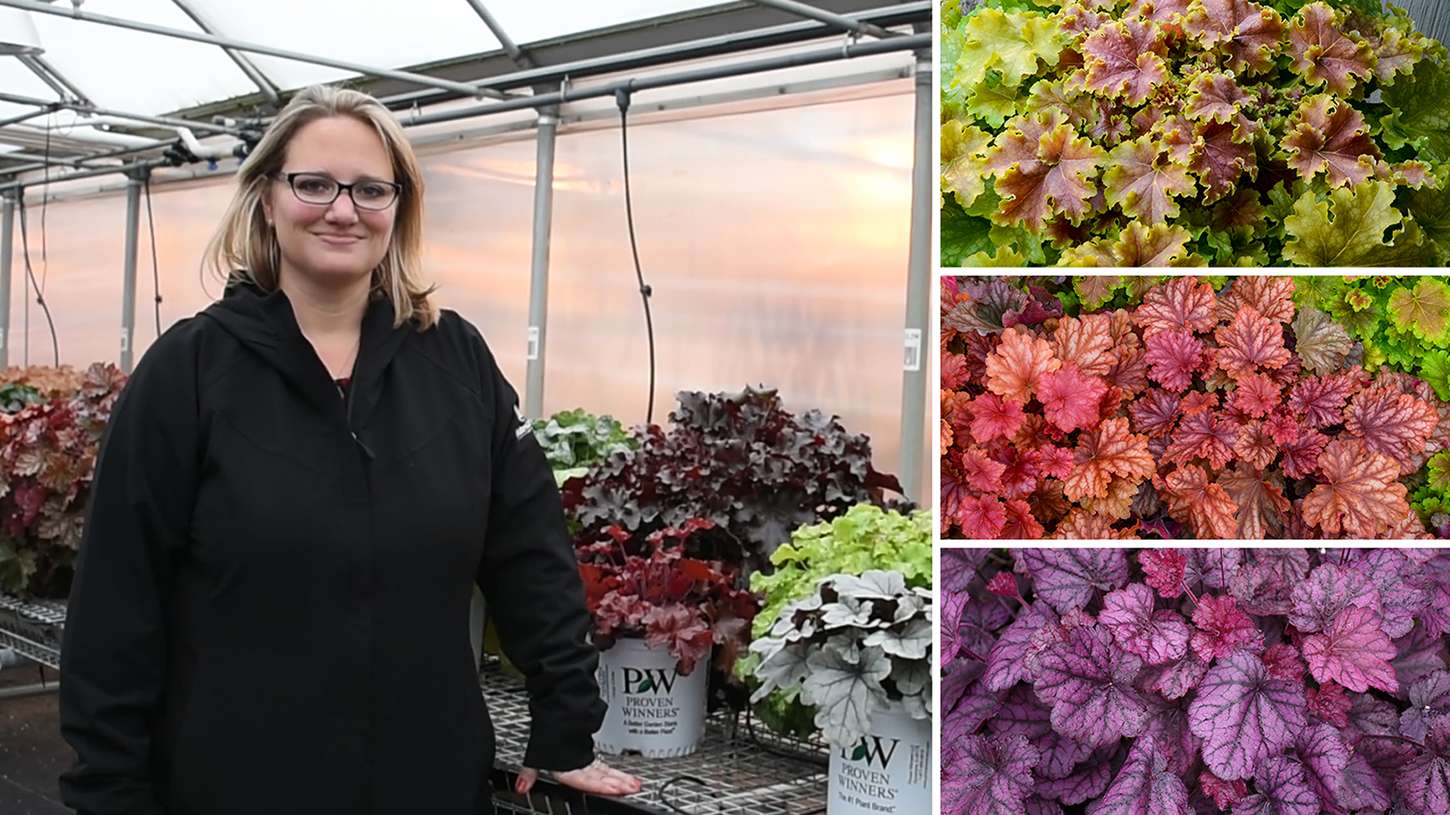Heuchera 'Mahogany Monster' PP31395 CPBR7069
PRIMO® Series



Common Name: Coral Bells
The name says it all! Massive glossy, mahogany red leaves form a substantial clump of foliage. Slightly ruffled leaves can grow up to 6 inches wide. The flower stems are proportionate to the size of the clump: very thick, burgundy stems holds masses of light pink buds with cream flowers. Although the color is consistent throughout the season, older leaves become more coppery with age.
PRIMO® Heuchera differ from the DOLCE® Series with larger, faster growing habits and a more substanial landscape presence.
Coral bells are easy to grow and blend easily with most other perennials in the landscape. Because of their low, mounding habit, they are often used as edging along paths or in containers. Try cutting a few of the tall flower scapes for fresh bouquets.
The PRIMO® trademark is owned by Walters Gardens, Inc.
